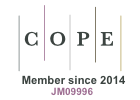Abstract
The Isoëto-Nanojuncetea-class includes short-lived and ephemerical communities occurring on temporarily flooded places in Western, Southern and Central Europe and Northern Africa. Results of the numerical classification of 739 phytosociological releves of the communities occurring in Poland are presented and discussed. Ali the releves were made in accordance with the principles of the BRAUN-BLANQUET school of syntaxonomy. The calculations were performed using NCLAS program of the SYN-TAX IV package. The JACCARD formuła and the unweighted pair-group method, using arithmetic averages (UPGMA) were applied. There is a strong habitat and floristic differentation of the communities of the Isoëto-Nanojuncetea-class occurring in Poland. The results of the numerical classification indicate that, the distuinguished communities belong to two alliances: the Radiolion linoidis (Rivas Goday 1961) Pietsch 1965 (for associations occurring on synanthropic localities like stubble fields) and the Elatini-Eleocharition ovatae Pietsch 1965 (for communities growing on bottoms of dried ponds and exposed river or lakę banks). The distinguished communities arę phytosociologically characterized on basis of 223 selected releves. These arę: Spergulario-Illecebretum verticillati, Ranunculo-Myosuretum minimi, Centaurium pulchellum-Pottia truncata-commumiy, Heleocharetum ovatae, Cyperetum flavescentis and Cyperus fuscus-Limosella aquatica-commumiy. The study focused on: (1) attempting to solve the problem of phytosociological classification for the communities occurring in Poland, (2) preparing a complete catalogue of them and (3) giving the full list of character species (also among bryophytes) of distinguished syntaxa. It has led to finding out the relation between the communities occurring in Poland and the associations of Western Europe. The problem of the naturality of certain distinguished associations was discussed. The paper gives also some open questions demanding further studies and some suggestions of methods to be applied.
Keywords
Poland; the Isoëto-Nanojuncetea-class; temporarily flooded places communities; phytosociology; syntaxonomical classification; numerical method






